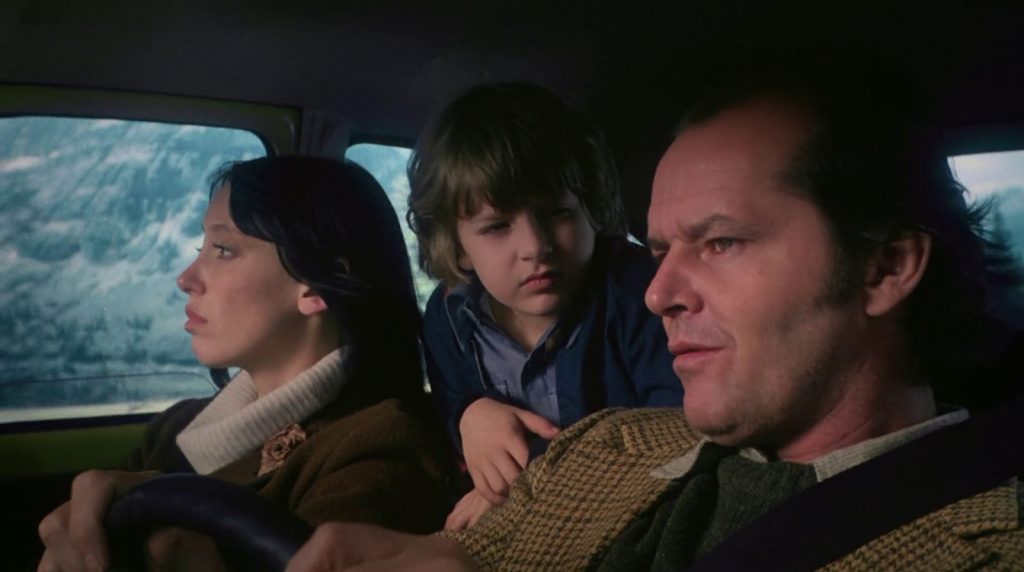Few horror films have left as lasting an impact as The Shining (1980). The movie is unquestionably a masterpiece, from its haunting Overlook Hotel setting to Jack Nicholson’s iconic “Here’s Johnny!” moment. However, the true horror was taking place behind the scenes, notably for Shelley Duvall, while the audience was left in a state of terror by what they witnessed on screen. Many others wondered if the cost of art was too expensive after The Shining became the subject of Hollywood nightmares.

Post Contents
A Film That Redefined Horror
The Shining by Stanley Kubrick wasn’t your typical haunted house film. The film, which was based on Stephen King’s book, used a psychological approach to horror, having viewers experience the characters’ sense of imprisonment and agony. With actors enduring countless retakes, cryptic direction, and an extremely stressful filming process, Kubrick’s obsession with perfection created a haunting atmosphere on and off the screen. Already an established actor, Jack Nicholson easily adjusted to Kubrick’s requests. However, Shelley Duvall, who is most recognized for her soft, ethereal appearance in movies like Popeye and 3 Women, was not as fortunate.
Shelley Duvall’s Nightmare on Set
Under Stanley Kubrick’s guidance, Jack Nicholson thrived, but Shelley Duvall, who portrayed Wendy Torrance, had a completely different experience. Duvall was pushed to the limit by Kubrick, who was renowned for his meticulous and demanding directing approach. She had to reenact the same stressful scenes hundreds of times. The notorious scene with the baseball bat? Earned a spot in the Guinness World Records with 127 shots. Kubrick allegedly isolated Duvall from the rest of the crew, making her feel alone and mentally exhausted.
The Infamous Baseball Bat Scene
The scene in The Shining where Wendy Torrance, holding a baseball bat, backs away from her increasingly insane husband, Jack, is one of the most terrifying scenes. The terror in her eyes, the trembling hands, the frantic sobbing of this seems uncanny. Kubrick pushed Duvall to the limit, making her perform the scene torturous 127 times, until she was emotionally and physically exhausted, her eyes swollen from real tears. The agony translated into a stunningly unvarnished performance, but at what cost?
Kubrick’s Psychological Tactics
Although Kubrick was renowned for his unorthodox directing techniques, Duvall received particularly harsh treatment from him. Crew members claim that he would criticize her on set, reprimand her for her acting in front of the entire team, and purposefully keep her out of the group’s camaraderie. Even Jack Nicholson acknowledged that Kubrick was “unusually cruel” to Duvall, supposedly to induce genuine despair for her role. Duvall later described the experience as “excruciating”, saying she had to cry for 12 hours a day, every day. It was an experience she would never fully recover from.
Did The Shining Ruin Shelley Duvall’s Career?
Before The Shining, Shelley Duvall had a bright future with roles in Robert Altman’s films such as 3 Women (1977) and Nashville (1975). However, her presence in Hollywood gradually diminished following The Shining. Many people think that she left the profession because of the severe stress she experienced from the movie. Duvall moved away from popular movies in the 1990s and concentrated on creating children’s television shows, such as Faerie Tale Theatre.
However, she had disappeared from public view by the early 2000s. Fans were stunned to find a very different Shelley Duvall when she reappeared in 2016-a reclusive woman who was dealing with her mental health. Her experience turned into a warning about the dark side of Hollywood, igniting discussions about how directors handle their actors in an effort to achieve the perfect film.
The Lasting Legacy of The Shining
Despite the horror behind the scenes, The Shining remains one of the most celebrated horror films of all time. For decades, audiences have returned for its psychological horror, uncertain ending, and memorable performances. However, the question of whether Shelley Duvall’s suffering was necessary has persisted. Would Kubrick have been able to make the same classic movie without pushing his star to the limit?
Kubrick’s film received harsh criticism even from the author of the original novel, Stephen King. Due to Kubrick’s reduction of Wendy Torrance to a crying, defenseless figure, he notably disapproved of her portrayal, labeling her “one of the most misogynistic characters ever put on a film.” King’s portrayal of Wendy was far more powerful, which further questions Kubrick’s handling of Duvall.
The Shining’s Influence on Modern Horror
The Shining raised the bar for horror movies in spite of the criticism. Numerous directors were impacted by its psychological depth, unsettling atmosphere, and slow-burning tension. Kubrick’s masterwork is heavily referenced in films like Doctor Sleep (2019), which is the sequel to The Shining, and Hereditary (2018). The legacy of The Shining, however, goes beyond the movie itself; it also explores the price of artistic devotion and the lengths filmmakers would go to in order to achieve perfection.
While The Shining is praised for its brilliance, Shelley Duvall’s ordeal remains one of Hollywood’s most tragic stories. Fans continue to revisit her performance, not just for the horror on screen, but for the haunting truth behind it. For more great trivia about Hollywood movies and actors, click here. Thanks for reading!